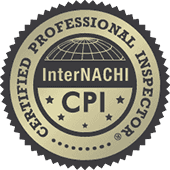How can a home inspection help find what’s hiding in my dryer vent?
/What’s hiding in your dryer vent? Have you noticed a reduction in the efficiency of your dryer? Had to have a heating element replaced? Do you know where your dryer vent is located and when it was last cleaned?
A standard item on every home inspection is the identification and condition of a home’s dryer vent. Vents that discharge in attics and crawlspaces may be depositing moisture and flammable materials in less-than-ideal locations.
Vents that go up and through the roof are better, but some regular maintenance should be performed to ensure proper ventilation. Lint can build up within the area where the vent ductwork takes a 90 degree bend upward, as well as where the oval duct connects to a circular duct or vent hose. I recommend having these areas cleaned by a qualified professional at least once a year to avoid dangerous blockages.
And for those that have dryers which vent out of a wall? Cleaning maintenance can be performed much easier but care should be taken to keep an eye on the exterior vent - ensure it is not covered with a screen, crushed, missing, or obstructed with lint.
Call Red Rooster Inspections to schedule a home inspection today, and I’ll help you understand not just where that vent is located, but the condition of the vent and hose as well.
Central Texans - call now to receive a free no-obligation quote for inspecting your next property.











